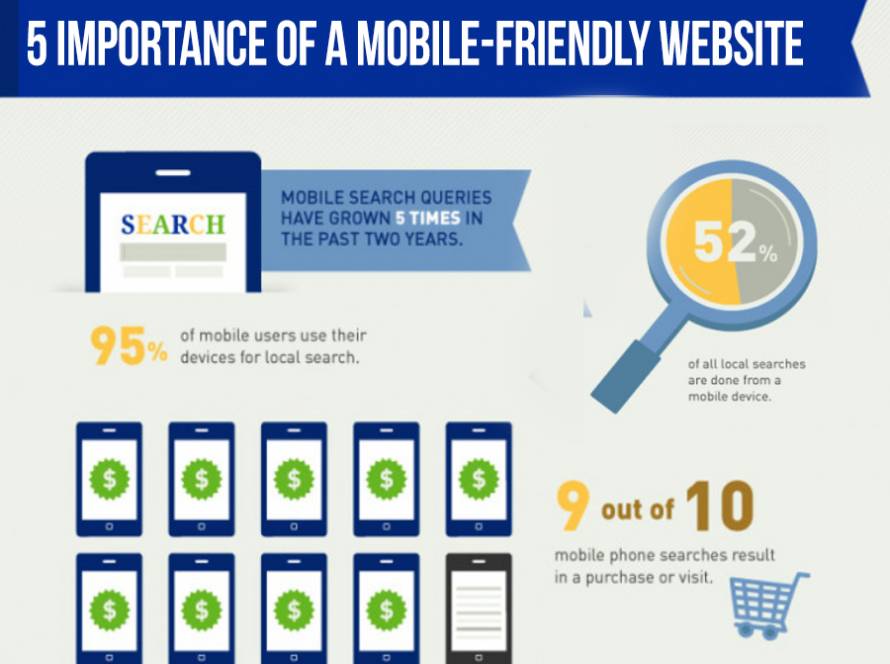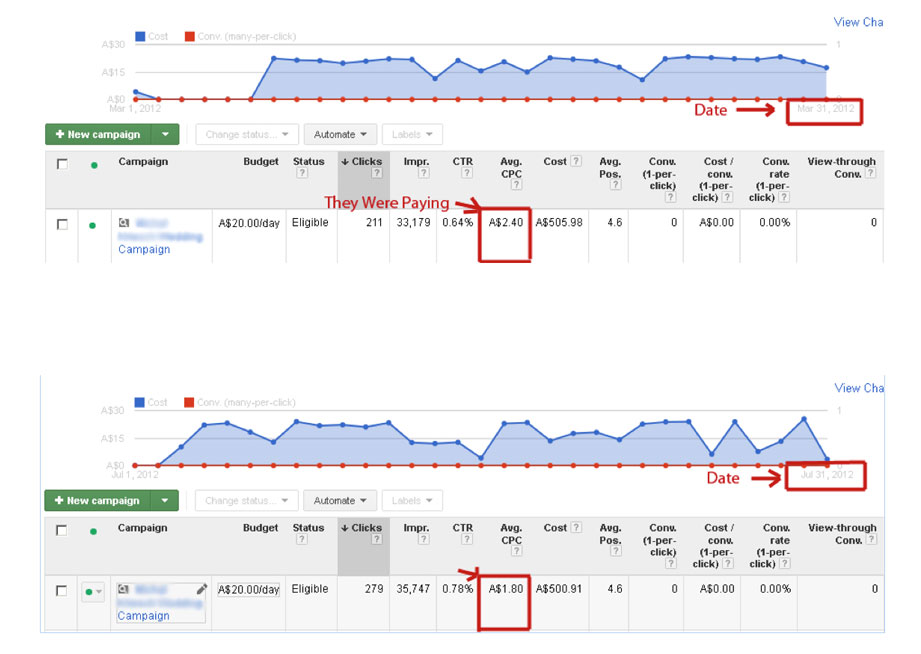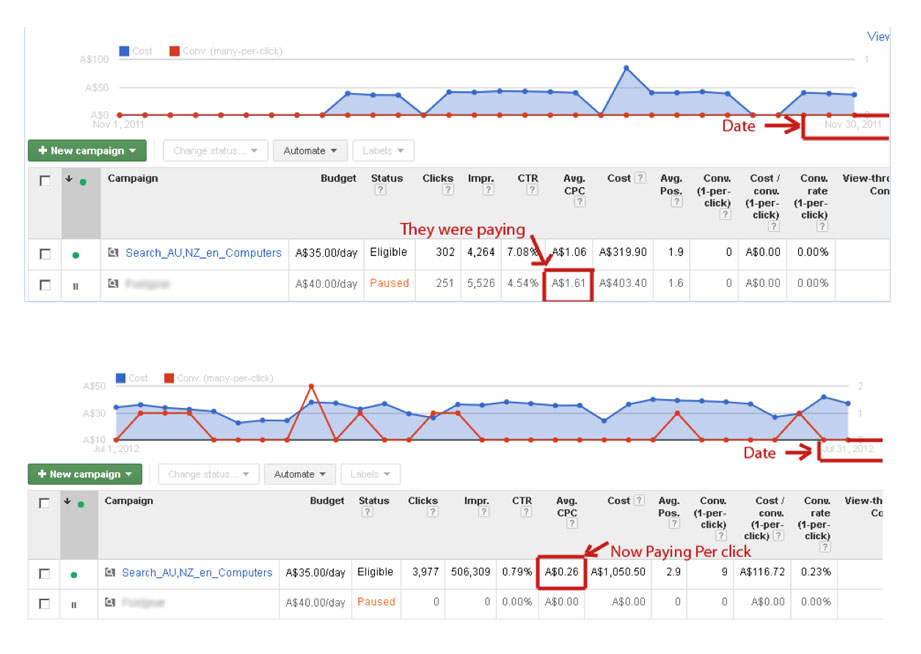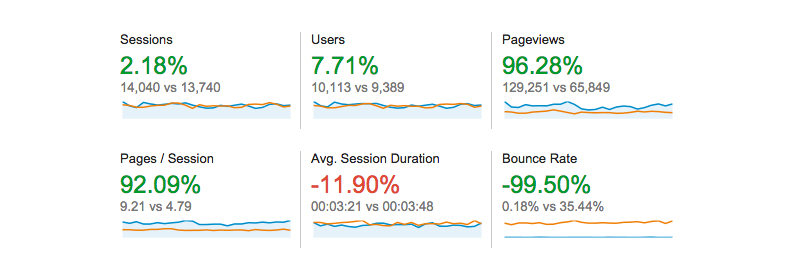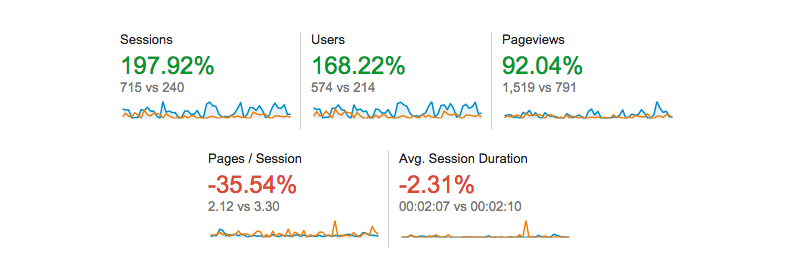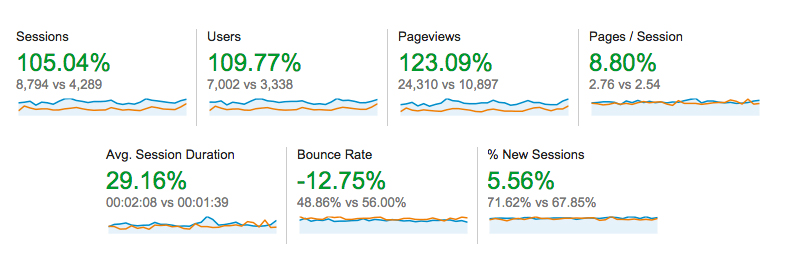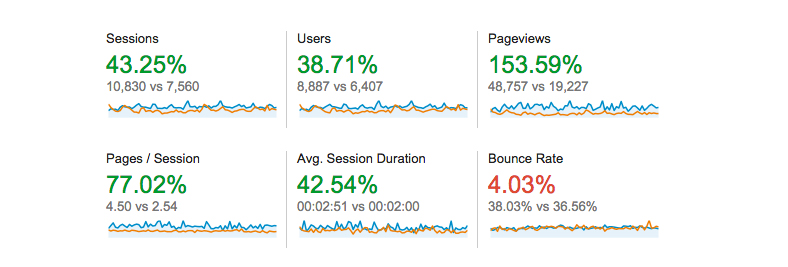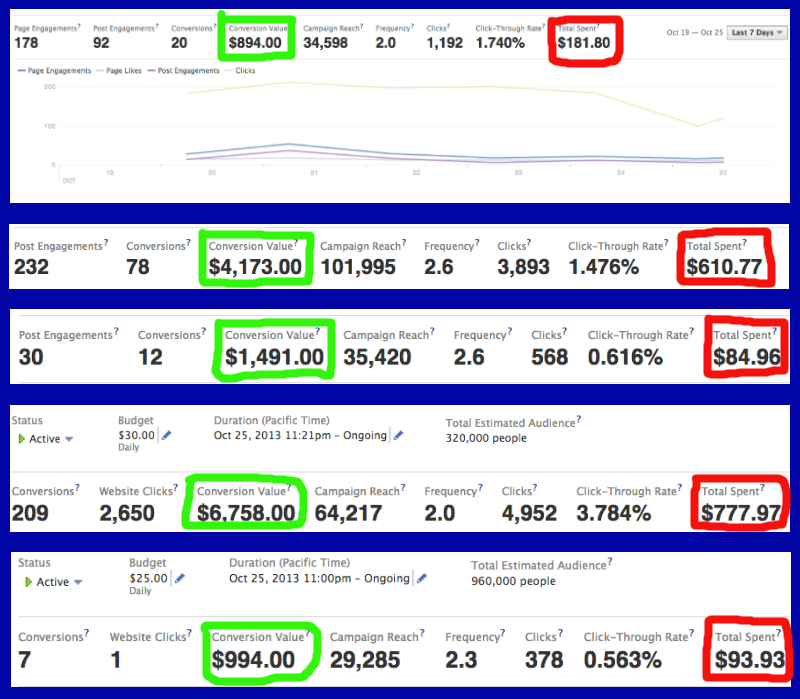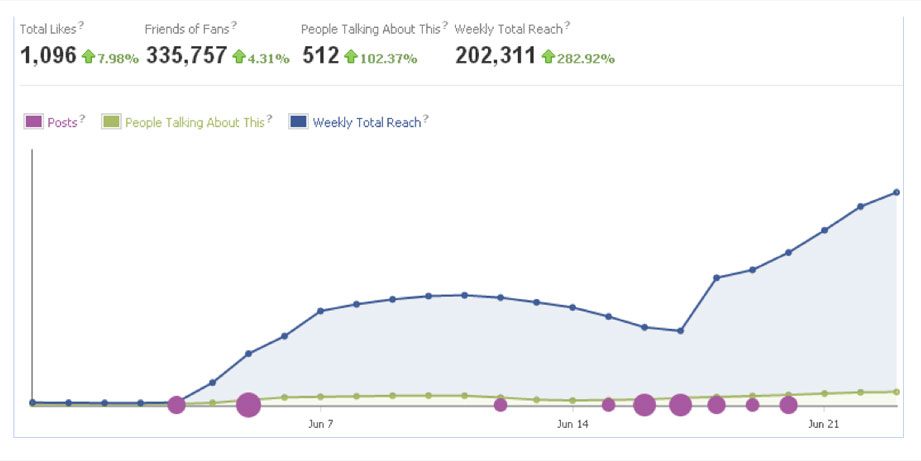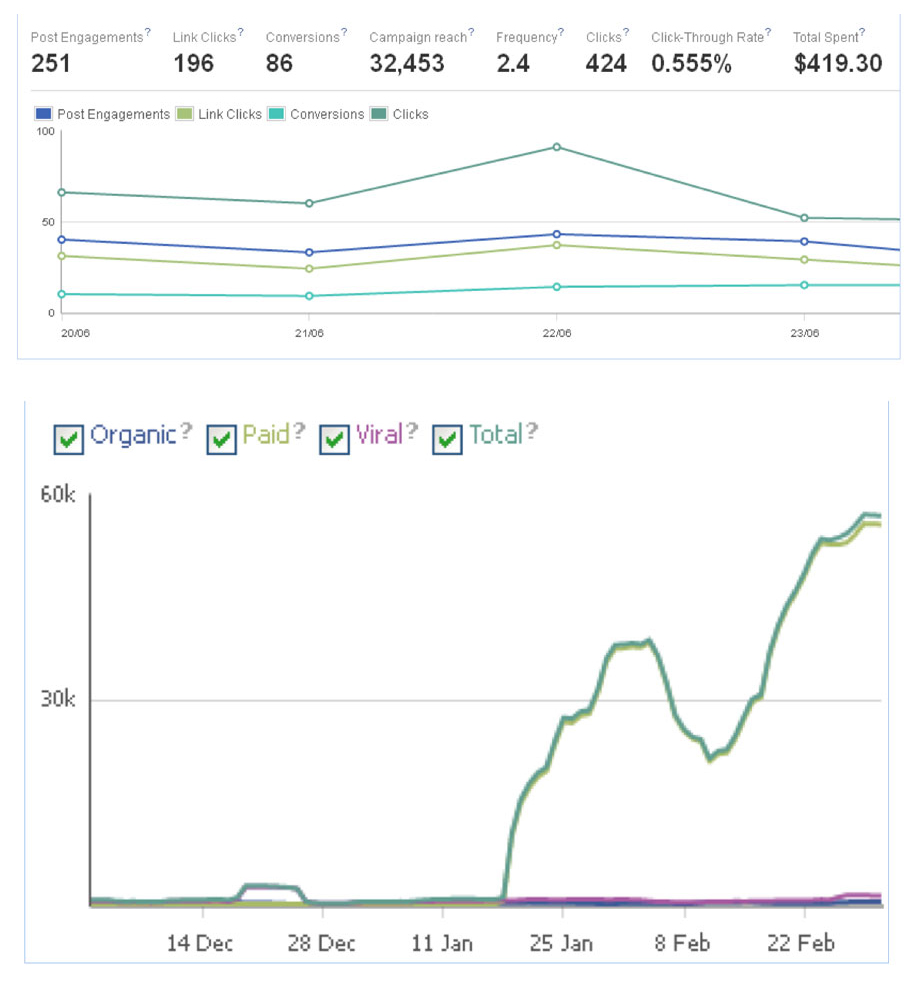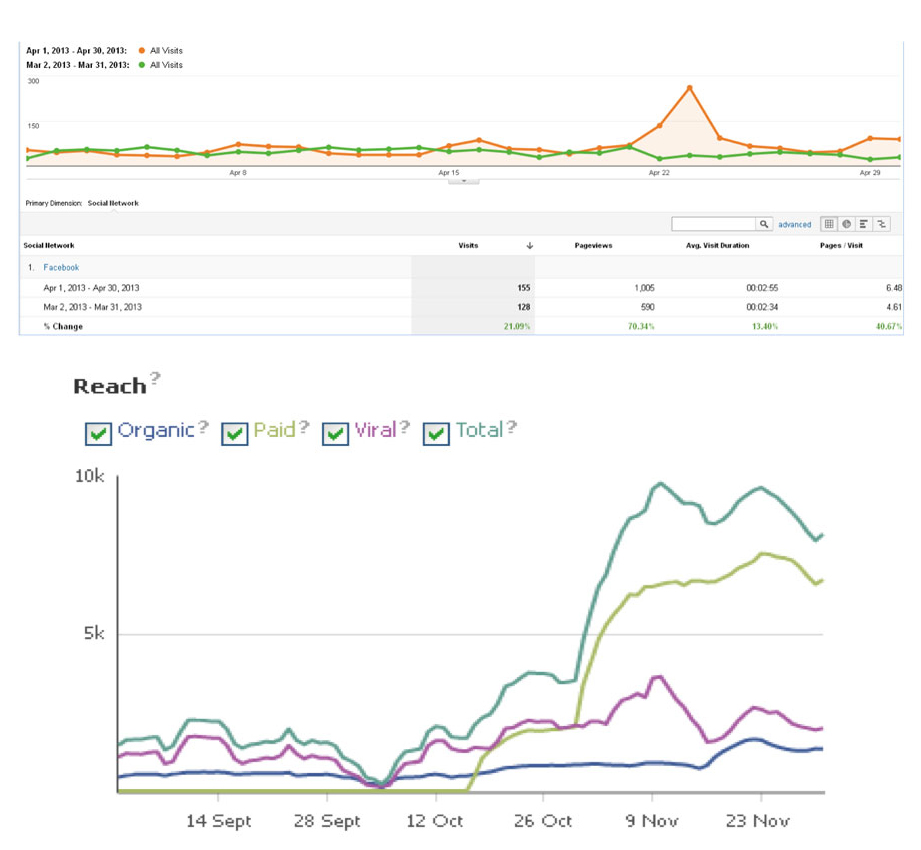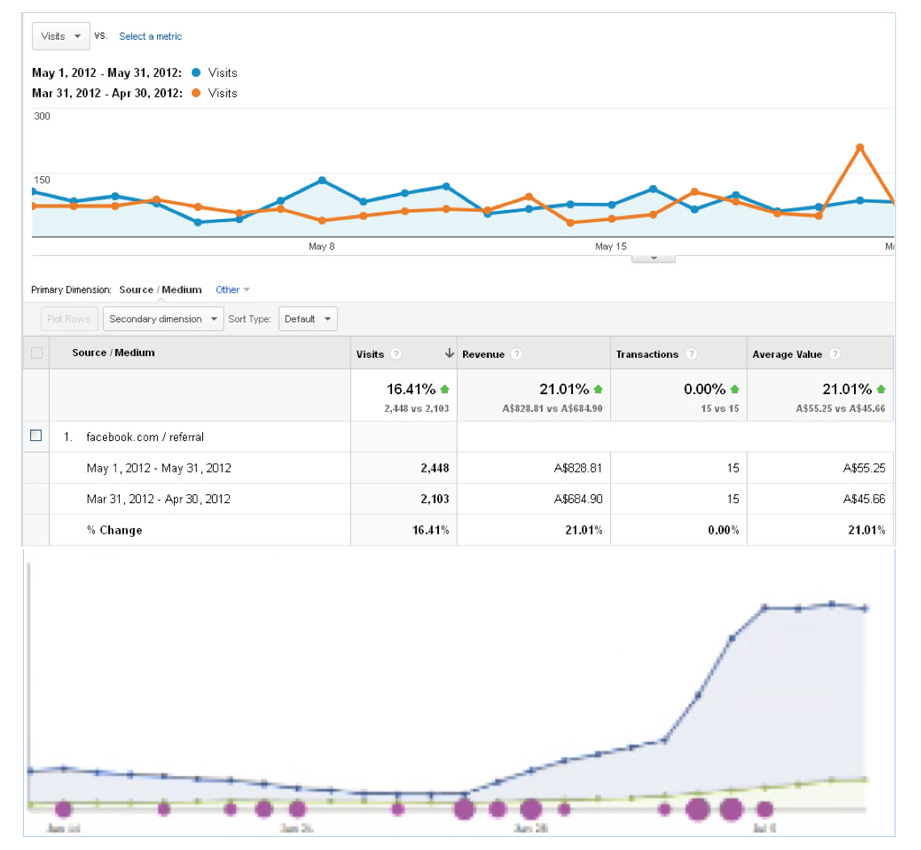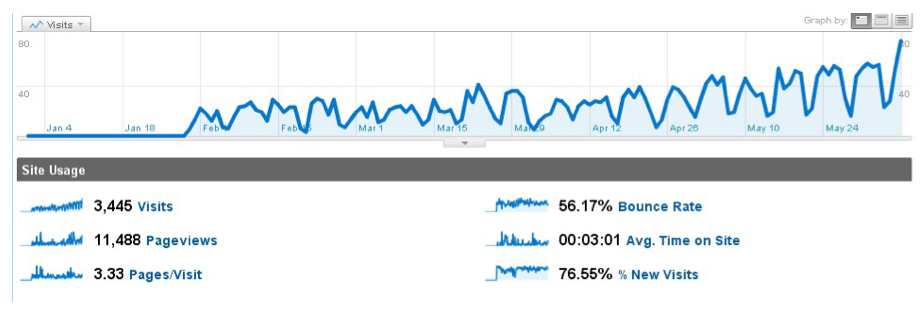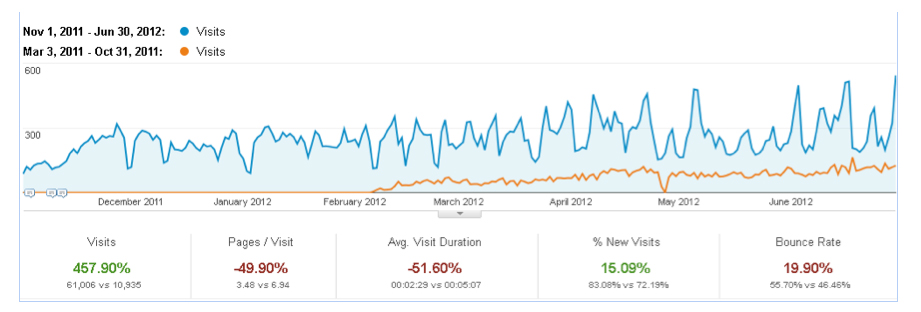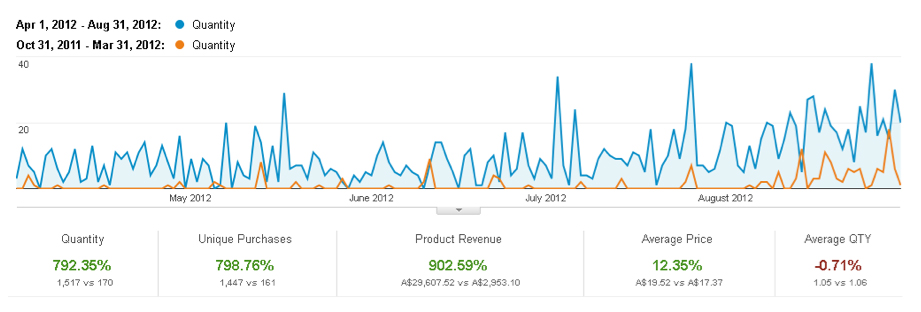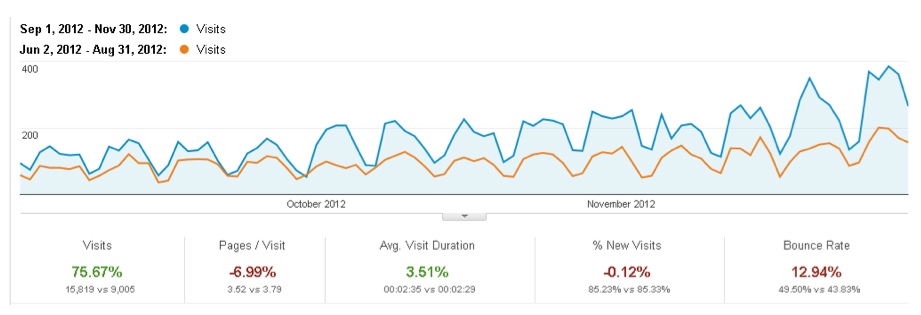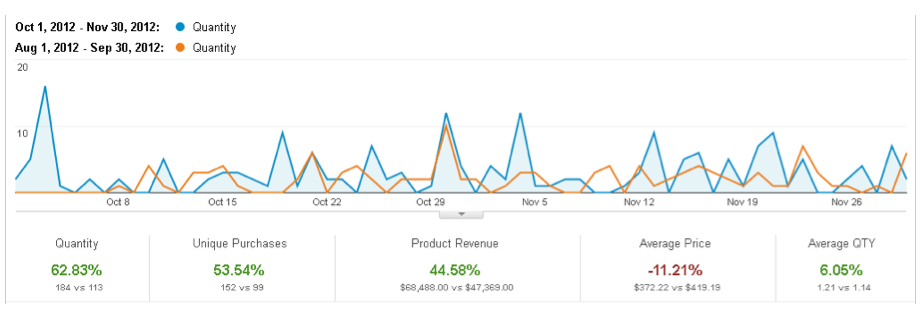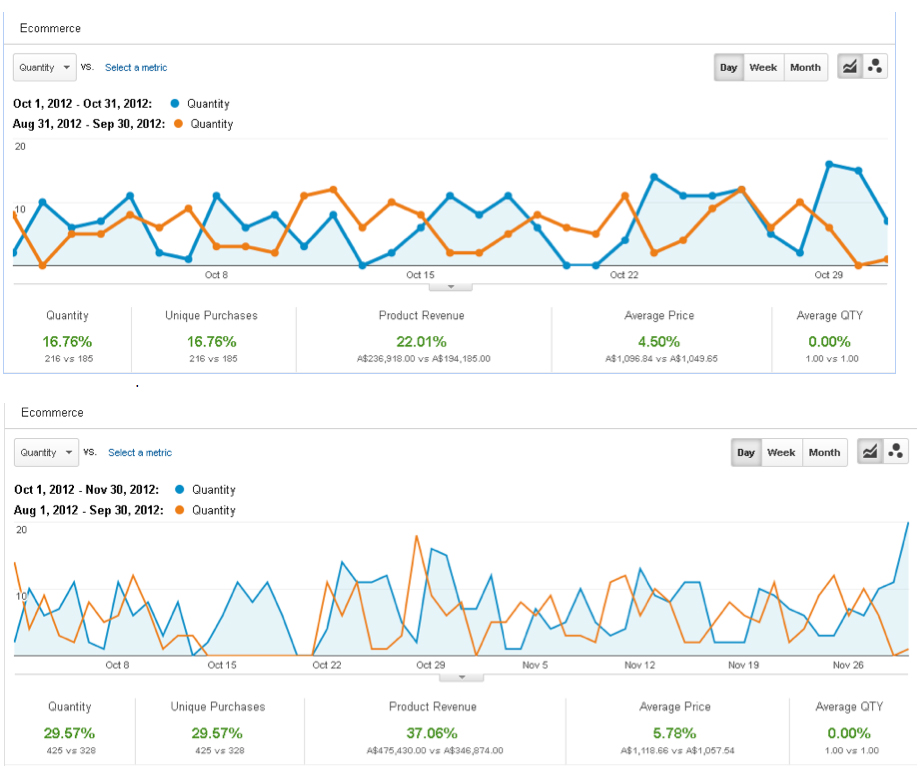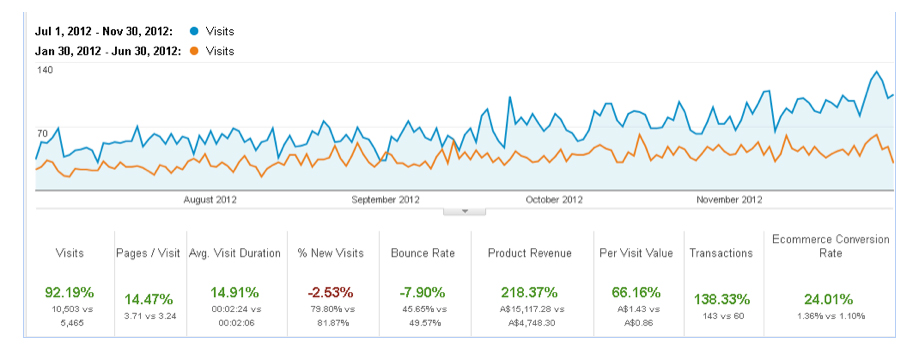A website redesign is a high-stakes project. Your new website can increase conversion rates and refresh your brand image, but it can also cause major problems if the redesign goes badly. With the right plan of action, you can minimize the risks and make your new website design a success.
Here are the 10 factors you should consider when working with your web design team on your new website.
1. Analyze Your Existing Web Design
The first step is to analyze your existing website and determine what works and what needs to be improved.
- Which pages are not getting viewed?
- Which CTAs are not being clicked?
- Which pages are causing visitors to leave?
You can use Google Analytics and heatmap tools to find out which parts of your website engage your visitors and get the most traffic. These insights can help you align your new website design and content with your customers’ needs. The pages that don’t get views need to be improved or removed from your website.
2. Define Your Target Audience
A great website design is much more than aesthetics. Over 65% of customers want companies to understand their needs and expectations.
Before you can write compelling copy and create a user experience tailored to the needs of your audience, you need to know who they are.
Who are your ideal customers?
What are they trying to achieve on your website?
Creating buyer personas can help you get a clear idea of your audiences’ preferences and motivations. Every web design decision needs to be made with your target audience in mind.
3. Set Your Goals
With a clear idea of who your target audience is, the next step of the website design process is to define your goals and key performance indicators (KPIs).
What do you want your new web design to achieve, and how will you measure success or failure?
Your goals will depend on your business. An e-commerce website wants to sell more products, while a B2B business may want to attract more leads that can be passed on to the sales team. When you have defined your goal, you can align your web design elements and website structure to nudge visitors towards a conversion.
4. Streamline the Path to Conversion
When visitors land on your website, they want to find the information they are looking for or complete a task as quickly as possible.
Your website needs to make it as easy as possible for visitors to accomplish the goals they are trying to achieve. For example, let’s say you provide a carpet cleaning service. A visitor will want to see:
- Examples of your work
- Locations you cover
- Contact information
- Social proof (testimonials)
- Pricing
Your new web design needs to make it easy for people to find this information quickly. The easier it is, the more likely they are to convert and contact your business or make an online booking.
5. Review Your Content Strategy
A website design refresh is an excellent opportunity to review and improve your content marketing strategy. You can use the insights gained from Google Analytics to review your content marketing assets.
How well are you meeting the needs of your audience and answering any questions they have about your product or service?
- Identify out of date content that needs to be updated
- Review your keyword strategy
- Replicate high-performing content formats and topics to increase your reach
- Analyze your competitors’ content strategy
By auditing your content marketing assets and analyzing your competitors, you can identify keyword opportunities to increase your share of the SERP for search queries related to your products and services.
6. Revamp Your Calls to Action (CTAs)
Magicdust, an agency that does web design Sydney wide, makes the key point that CTAs are the most important web design elements. Your redesign is an opportunity to increase the effectiveness of your CTAs and boost your conversion rates. Make sure your CTA buttons stand out from the rest of your web design elements and tell your visitors exactly what to do next.
If you offer a downloadable white paper as a lead magnet, use an action-packed CTA on your landing page form. An active CTA like “Get Your Free Whitepaper” is much more compelling than a standard “Submit.”
You can create a shortlist of CTAs and use A/B testing when your new web design goes live to see which resonates best with your audience.
7. Make SEO Part of the Website Design Process
A website redesign can be a disaster for your SEO if you don’t take precautions to protect your ranking.
On-page optimization should take place on your staging domain before your new website design goes live to avoid damaging your ranking.
For off-page SEO, you should keep URLs the same for your important pages and the pages with a significant number of backlinks pointing to them. Losing a page with a significant number of inbound links can result in a drop in domain authority.
8. Set Up Redirects for Deleted URLs
You may find some pages don’t contribute to your website design goals or offer much value to your audience. But deleting these pages can cause problems as users that click on legacy links will land on a 404 error page.
Use a crawling tool like Screaming Frog to map out all of your existing web pages and URLs. For every page you delete, set up a 301 redirect to send users to your homepage or a relevant page on your website.
9. Focus on Mobile Users
Over 50% of all internet traffic now takes place on mobile devices. Creating a mobile-friendly website design is crucial for conversions and SEO performance.
The easiest way to offer a great user experience to mobile visitors is to choose a responsive theme that will automatically adapt to the visitor’s screen size.
If you’re creating a custom website, make sure your web design team uses HTML and CSS to automatically resize, adjust, and hide page elements so that your new website will look great and perform well on all devices.
10. Test Your New website Pre-Launch
Once your new web design is complete, conduct an in-depth review on the staging domain to ensure everything is working and ready for launch. Your pre-launch checklist should include:
- Checking all pages render correctly
- Viewing your website on multiple devices
- Looking for broken links
- Checking all redirects
- Verifying contact information
- Reviewing page titles and meta descriptions
- Ensuring web design consistency across all pages
Performing a pre-launch review will save you the headache and stress of rushing to fix issues post-launch.
Conclusion
When you’re refreshing your website design, you need to focus on more than aesthetics. The redesign process should encompass user experience, SEO, and functionality as well as looks.
Be clear about the goals you want to achieve, and make sure that your visitors are always at the forefront of your decision-making. With a successful redesign, your website can be a powerful revenue engine for your business.



